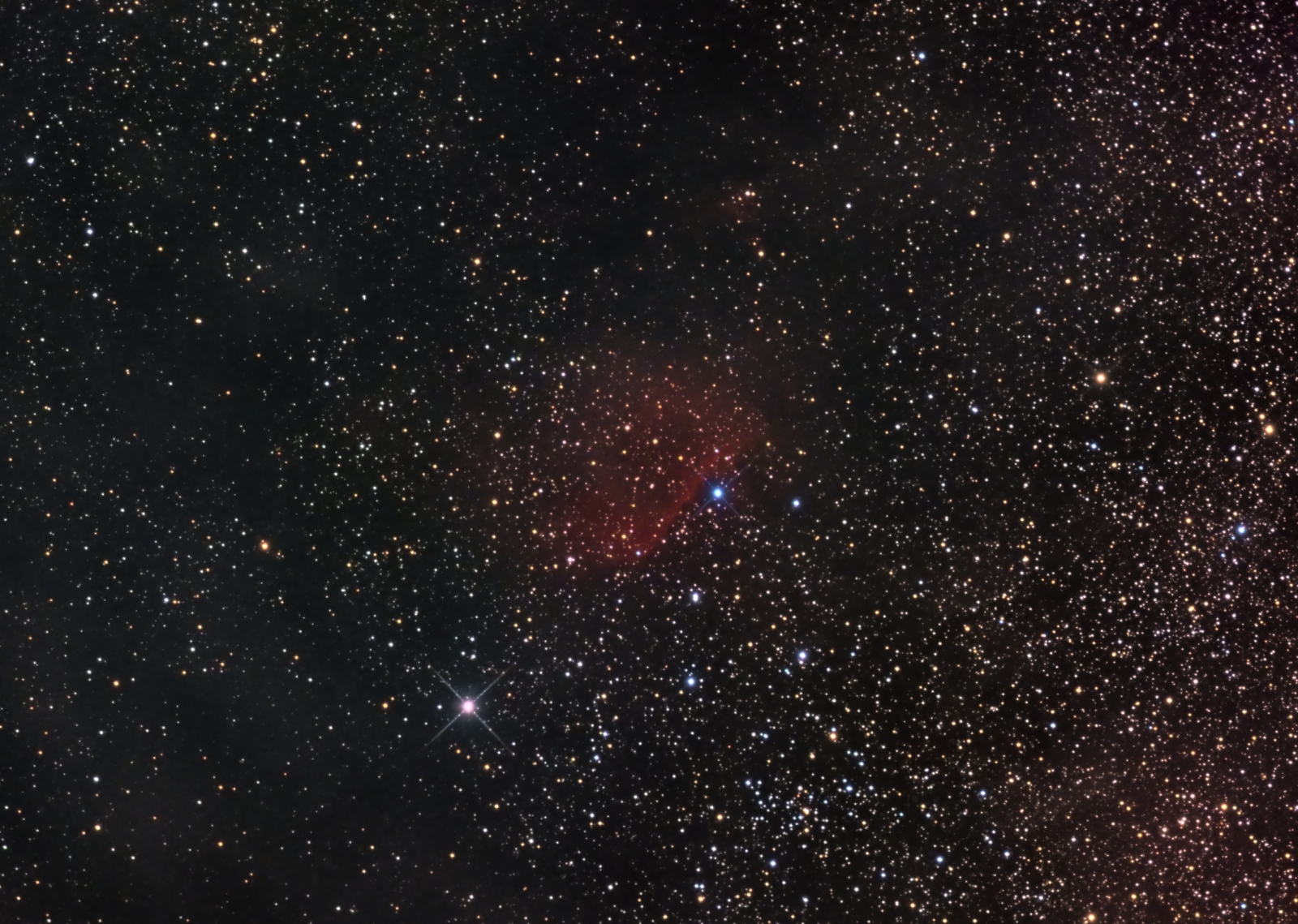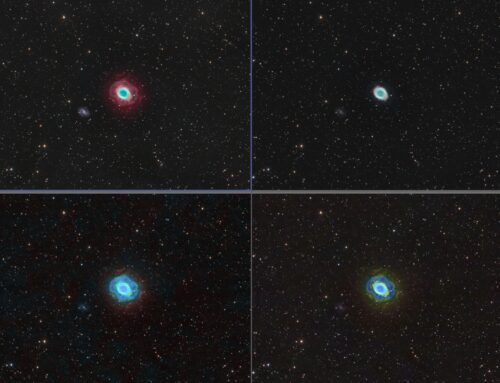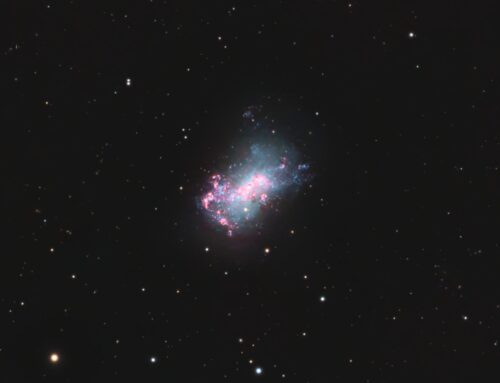Sh2-65 Emission Nebula
 Click image for full size version
Click image for full size version
July 7, 2016
Sh2-65 is a small, faint emission nebula and is also designated LBN 91 and RCW 175. It lies in Aquila, the Eagle, at a distance of about 10,700 light years, and has an apparent width about 1/4 that of the full Moon. This nebula seems to be imaged very seldom. The few images I was able to find tend to show only the brightest part of the nebula (the diagonal “bar” along the right edge). In addition to the bar and fainter surrounding hydrogen emissions in red, my image also shows faintly glowing, patchy dust surrounding this nebula which is reflecting starlight off of dust particles. This image blends the typical red, green and blue colour channels with data collected through the deep red Hydrogen-alpha filter.
Tekkies:
SBIG STL-11000M camera, Baader Ha, R, G and B filters, 10″ f/6.8 ASA astrograph, Paramount MX. Guided with QHY5 guider and 80 mm f/6 Stellar-Vue refractor. Acquisition and guiding with TheSkyX. Focusing with FocusMax. Automation with CCDCommander. All preprocessing and processing in PixInsight. Shot from my SkyShed in Guelph, Ontario. Half Moon for Ha and no moon for RGB. Good to excellent transparency and average to very good seeing throughout acquisition.
19x20m Ha, 12x15m R, 12x15mG and 12x15mB unbinned frames (total=15hr20m).
Initial Processing:
Ha, R, G and B masters were cropped and processed separately with DBE.
HaRGB
R, G and B were combined to make an RGB image which was processed with ColourCalibration. The NBRGBCombine Script was applied with default settings to produce a linear HaRGB image. MultiscaleLinearTransform was used to reduce noise in the background areas. HistogramTransformation was applied to make a pleasing yet bright image.
Synthetic Luminance:
Creation and cleanup: The cleaned up Ha, R,G and B masters were combined using the ImageIntegration tool (average, additive with scaling, noise evaluation, iterative K-sigma / biweight midvariance, no pixel rejection).
Deconvolution: A copy of the image was stretched to use as a deconvolution mask. A star mask was made from the linear SynthL image to use as a local deringing support image. Deconvolution was applied (90 iterations, regularized Richardson-Lucy, external PSF made using DynamicPSF tool with about 20 stars; local deringing at 70% and global dark deringing at 0.03).
Linear Noise Reduction: MultiscaleLinearTransform was applied to reduce the noise.
Stretching: HistogramTransformation was applied to make a pleasing yet bright image. TGVDenoise was applied and the image was stretched again with HistogramTransformation to reset the black point.
Combining SynthL with HaRGB:
The luminance channel of the HaRGB image was extracted, processed and then added back into the HaRGB image as follows:
1. Equalize RGB channels with RGBWorkingSpace and extract luminance from the HaRGB image.
2. Apply LinearFit to extracted luminance using SynthL as the reference.
3. Use ChannelCombination in Lab mode to replace the HaRGB’s luminance with the fitted luminance from step 2.
4. LRGBCombine was then used to make a SynthLHaRGB image.
Final Processing
MultiscaleLinearTransform was used to sharpen the stars and nebula (Bias +0.05 for layers 2 and 3). Then contrast, brightness and saturation were adjusted with the Curves tool, with separate passes and appropriate masks for adjusting background, nebula and stars.
Image scale is about 1.1 arcsec per pixel for this camera / telescope combination.






Leave A Comment